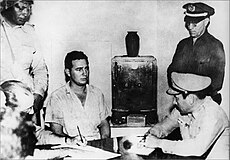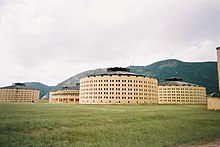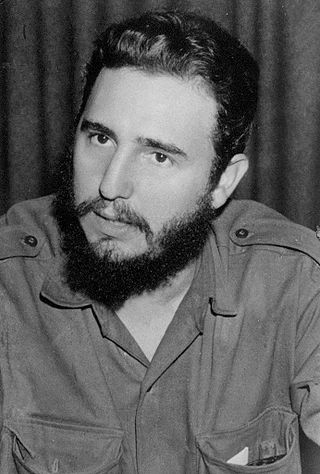
Fidel Alejandro Castro Ruz was a Cuban revolutionary and politician who was the leader of Cuba from 1959 to 2008, serving as the prime minister of Cuba from 1959 to 1976 and president from 1976 to 2008. Ideologically a Marxist–Leninist and Cuban nationalist, he also served as the first secretary of the Communist Party of Cuba from 1965 until 2011. Under his administration, Cuba became a one-party communist state; industry and business were nationalized, and socialist reforms were implemented throughout society.
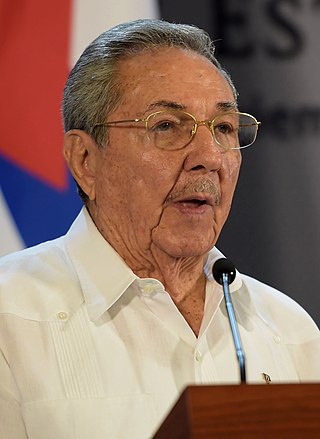
Raúl Modesto Castro Ruz is a Cuban retired politician and general who served as the first secretary of the Communist Party of Cuba, the most senior position in the one-party communist state, from 2011 to 2021, and President of Cuba between 2008 and 2018, succeeding his brother Fidel Castro.

The Cuban Revolution was the military and political effort to overthrow Fulgencio Batista's dictatorship which reigned as the government of Cuba between 1952 and 1959. It began after the 1952 Cuban coup d'état which saw former president and military general, Fulgencio Batista topple the nascent Cuban democracy and consolidate power. Among those opposing the coup was Fidel Castro, then a novice attorney who attempted to contest the coup through Cuba's judiciary. Once these efforts proved fruitless, Fidel Castro and his brother Raúl led an armed attack on the Cuban military's Moncada Barracks on 26 July 1953. Following the attack's failure, Fidel Castro and his co-conspirators were arrested and formed the 26th of July Movement (M-26-7) in detention. At his trial, Fidel Castro launched into a two hour speech that won him national fame as he laid out his grievances against the Batista dictatorship. In an attempt to win public approval, Batista granted amnesty to the surviving Moncada Barracks attackers and the Castros fled into exile. During their exile, the Castros consolidated their strategy in Mexico and subsequently reentered Cuba in 1956, accompanied by Che Guevara, whom they had encountered during their time in Mexico.
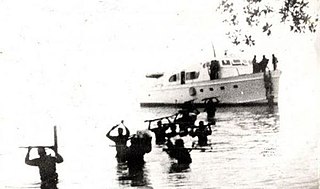
Granma is a yacht that was used to transport 82 fighters of the Cuban Revolution from Mexico to Cuba in November 1956 to overthrow the regime of Fulgencio Batista. The 60-foot diesel-powered vessel was built in 1943 by Wheeler Shipbuilding of Brooklyn, New York, as a light armored target practice boat, US Navy C-1994, and modified postwar to accommodate 12 people. "Granma", in English, is an affectionate term for a grandmother; the yacht is said to have been named for the previous owner's grandmother.

The 26th of July Movement was a Cuban vanguard revolutionary organization and later a political party led by Fidel Castro. The movement's name commemorates the failed 1953 attack on the Moncada Barracks in Santiago de Cuba, part of an attempt to overthrow the dictator Fulgencio Batista.

The Moncada Barracks were military barracks in Santiago de Cuba, Cuba named after General Guillermo Moncada, a hero of the Cuban War of Independence. On 26 July 1953, the barracks was the site of an armed attack by a small group of revolutionaries led by Fidel Castro. That day a simultaneous attack was carried out on the Carlos M. de Cespedes Barracks in Bayamo directed by Raúl Martínez Ararás by order of Castro. The attack failed and the surviving revolutionaries were imprisoned. This armed attack is widely accepted as the beginning of the Cuban Revolution. The date on which the attack took place, 26 July, was adopted by Castro as the name for his revolutionary movement, Movimiento 26 Julio, which eventually toppled the dictatorship of Fulgencio Batista on 1 January 1959.

Eduardo René Chibás Ribas was a Cuban politician who used radio to broadcast his political views to the public. He primarily denounced corruption and gangsterism rampant during the governments of Ramón Grau and Carlos Prío which preceded the Batista era. He believed corruption was the most important problem Cuba faced.

Huber Matos Benítez was a Cuban military leader, political dissident, activist, and writer. He opposed the dictatorship of Fulgencio Batista from its inception in 1952 and fought alongside Fidel Castro, Raúl Castro, Che Guevara, Camilo Cienfuegos and other members of the 26th of July Movement to overthrow it. Following the success of the Cuban Revolution that brought Fidel Castro to power, he criticized the regime's shift in favor of Marxist principles and ties to the Popular Socialist Party (PSP). Convicted of treason and sedition by the revolutionary government, he spent 20 years in prison (1959–1979) before being released in 1979. He then divided his time between Miami, Florida, and Costa Rica while continuing to protest the policies of the Cuban government.
Frank País García was a Cuban revolutionary who campaigned for the overthrow of General Fulgencio Batista's government in Cuba. País was the urban coordinator of the 26th of July Movement, and was a key organizer within the urban underground movement, collaborating with Fidel Castro's guerrilla forces which were conducting activities in the Sierra Maestra mountains. País was killed in the streets of Santiago de Cuba by the Santiago police on July 30, 1957.

José Miró Cardona was a Cuban politician. He served as Prime Minister for a period of some six weeks in early 1959, following his appointment by President Manuel Urrutia on 5 January 1959. On 13 February 1959, Miró unexpectedly resigned and was replaced by Fidel Castro.
Gustavo Arcos Bergnes was a fellow Cuban revolutionary alongside Fidel Castro who later became an imprisoned dissident of the government. Arcos has been described as "a symbol of the opposition, and the dean of the opposition".
The Cuban Revolution was the overthrow of Fulgencio Batista's regime by the 26th of July Movement and the establishment of a new Cuban government led by Fidel Castro in 1959.
Mario Chanes de Armas was a former Cuban revolutionary and ally of Fidel Castro. He was a veteran of the attack on the Moncada barracks in July 1953 and served time in Batista's New Model Prison on the Isle of Pines with fellow revolutionary Fidel Castro. After Castro's rise to power, he was labeled an enemy of the regime and imprisoned for almost 30 years.
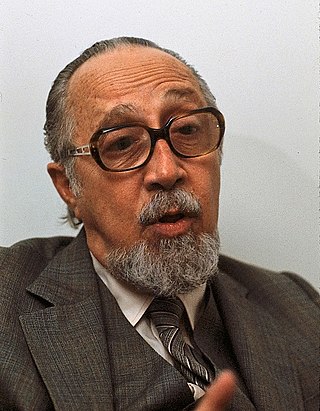
Carlos Rafael Rodríguez Rodríguez was a Cuban Communist politician and economist, who served in the cabinets of presidents Fulgencio Batista and Fidel Castro.

Melba Hernández Rodríguez del Rey was a Cuban politician and diplomat. She served as the Cuban Ambassador to Vietnam and to Cambodia.
The Cuban Revolution was not only fought by armed rebels on the battlefield but also through the propaganda campaigns designed and orchestrated by Fidel Castro and his rebel comrades. Propaganda in Cuba during the revolution included Castro's use of personal interviews with journalists, radio broadcasts and publicity seeking operations that contributed significantly to the victory of the rebels over Fulgencio Batista's government and provided insight into the successful propaganda campaign established by Castro after gaining power. The limited yet successful revolutionary propaganda apparatus transitioned into what Castro has called "one of the most potent weapons in his foreign policy arsenal." Today the Cuban government maintains an intricate propaganda machine that includes a global news agency, magazines, newspapers, broadcasting facilities, publishing hoes , front groups, and other miscellaneous organizations that all stem from the modest beginnings of Castro's revolutionary propaganda machine.

Eulogio Amado Cantillo Porras was a major general in the Cuban Army. General Cantillo served as Chief of the Joint Staff during the dictatorship of Fulgencio Batista, but did not participate in the military coup that brought Batista to power. During the Cuban Revolution, he led Cuban soldiers in the fight against Fidel Castro's 26th of July Movement. After President Batista fled the country at 3:00 A.M. on January 1, 1959, he was left to serve briefly as the de facto Head of State in the early hours of January 1, 1959 until the official proclamation of the President of the Senate of Cuba, Anselmo Alliegro y Milá, as the Interim President of Cuba later that day. On January 2, 1959, the eldest judge of the Supreme Court, Carlos Manuel Piedra, was appointed as the Interim President by a junta led by him in accordance with the 1940 Cuban Constitution. However, the appointment of Piedra, the last president to be born under Spanish Cuba, was met with opposition from Castro, who believed that Manuel Urrutia should be appointed. After the Cuban Revolution, he was tried by the Revolutionary tribunals and sentenced to 15 years in prison. He was released early in the mid-1960s, and went into exile in Miami where he died on September 9, 1978.
The Cuban communist revolutionary and politician Fidel Castro took part in the Cuban Revolution from 1953 to 1959. Following on from his early life, Castro decided to fight for the overthrow of Fulgencio Batista's military junta by founding a paramilitary organization, "The Movement". In July 1953, they launched a failed attack on the Moncada Barracks, during which many militants were killed and Castro was arrested. Placed on trial, he defended his actions and provided his famous "History Will Absolve Me" speech, before being sentenced to 15 years' imprisonment in the Model Prison on the Isla de Pinos. Renaming his group the "26th of July Movement" (MR-26-7), Castro was pardoned by Batista's government in May 1955, claiming they no longer considered him a political threat while offering to give him a place in the government, but he refused. Restructuring the MR-26-7, he fled to Mexico with his brother Raúl Castro, where he met with Argentine Marxist-Leninist Che Guevara, and together they put together a small revolutionary force intent on overthrowing Batista.

Haydée Santamaría Cuadrado was a Cuban revolutionary and politician, regarded as a heroine in post-revolutionary Cuba. She participated in the assault on Moncada Barracks in Santiago de Cuba on July 26, 1953, an action for which she was imprisoned along with Melba Hernández. She was a founding member of the Central Committee of the Communist Party of Cuba and one of the first women to join the PCC. She maintained a high position in its leadership throughout her life. Having participated in the attack on the Moncada Barracks, Haydée Santamaría is among a relatively small group of people who were involved in every phase of the Cuban Revolution, from its inception to its fruition.
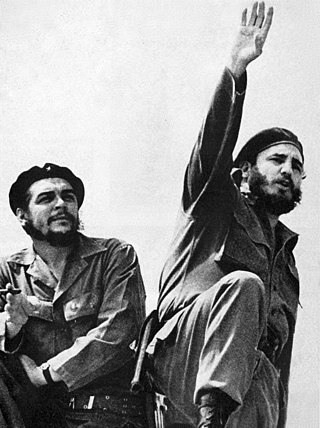
The consolidation of the Cuban Revolution is a period in Cuban history typically defined as starting in the aftermath of the revolution in 1959 and ending in the first congress of the Communist Party of Cuba 1975, which signified the final political solidification of the Cuban revolutionaries' new government. The period encompasses early domestic reforms, human rights violations continuing under the new regime, growing international tensions, and politically climaxed with the failure of the 1970 sugar harvest.
